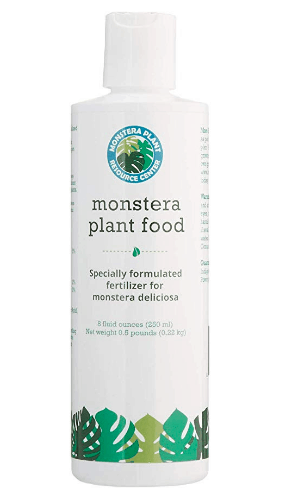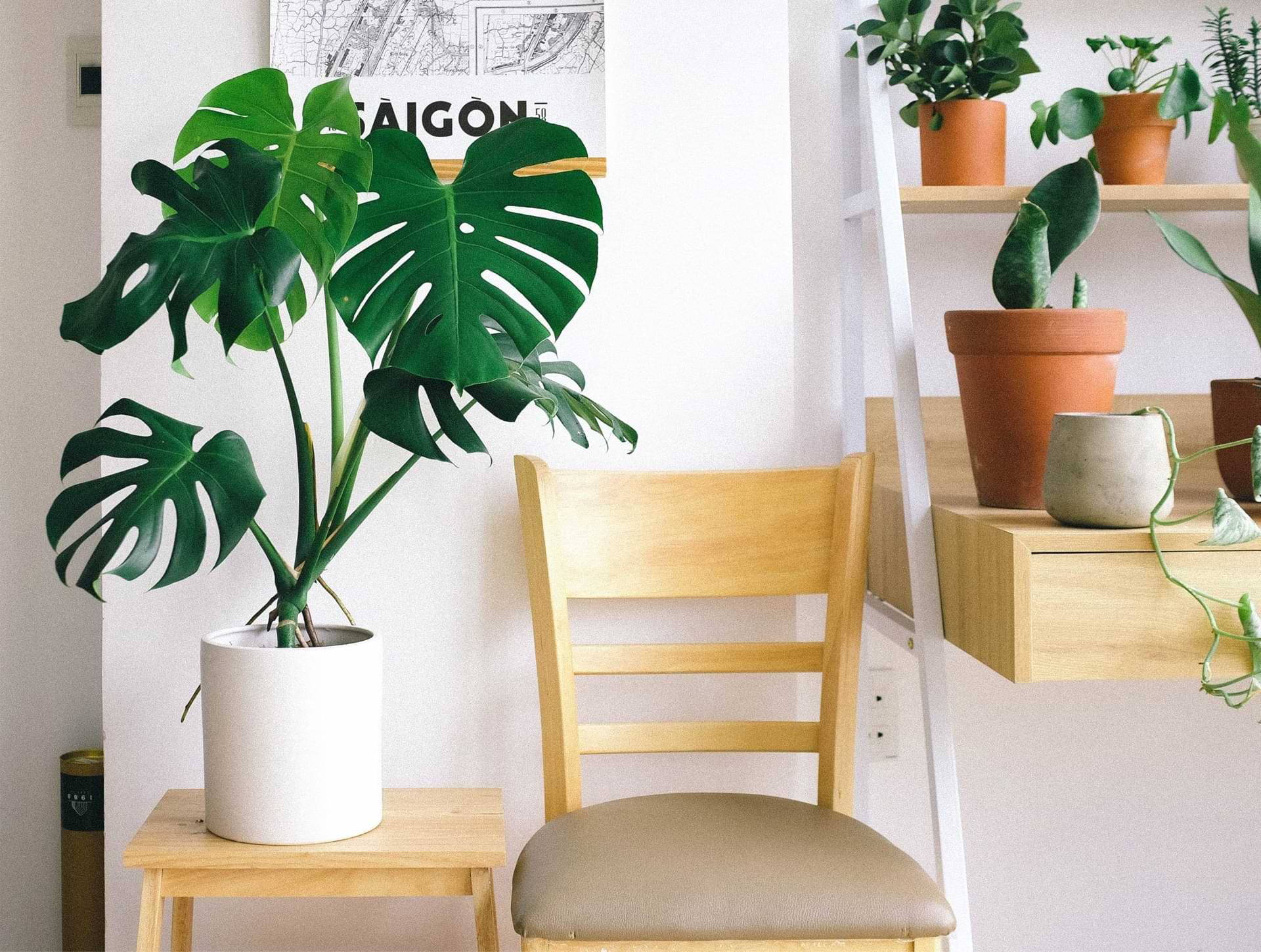The swiss cheese plant goes by many names, such as the hurricane plant, the cheese plant, Mexican breadfruit plant, and (incorrectly) split leaf philodendron.
This plant’s scientific name is monstera deliciosa because it can grow huge (up to 60 feet in the wild!) and because it produces the Mexican breadfruit. We call it the swiss cheese plant because of the characteristic holes in its massive leaves, also called fenestration.
Monstera deliciosa, or the swiss cheese plant, is a popular houseplant because of its massive, stunningly beautiful leaves and its tolerance for indoor light conditions.
If you’re ready for a swiss cheese plant of your own, here’s what you need to know!
Table of Contents
The Ultimate Guide to the Swiss Cheese Plant
Where to buy a swiss cheese plant
Monsteras aren’t super common in big chain stores like Home Depot or Lowe’s (though you might get lucky!), but a local nursery might have them. You can always call around to ask.
Your best bet is to find swiss cheese plants online from reputable sellers. You may want to start by searching “swiss cheese plant” and “monstera deliciosa” on eBay, Amazon, and Etsy.
Here are a few of our favorite planty Etsy shops:
Supplies you’ll need
Pot with drainage
Swiss cheese plants need pots with drainage holes so their roots won’t be sitting in water. Choose a fairly deep pot that’s a few inches wider than the root ball of your plant.
Moss pole
Swiss cheese plants like to climb, so your plant will appreciate a moss pole, trellis, or something else it can grab onto as it grows.
You can purchase ready-made trellises or moss poles at hardware stores, garden centers, or online. You can also make one yourself! Here’s our guide on how to make your own moss pole.
Soil
Swiss cheese plants like loamy soil with quite a bit of peat, so make sure to purchase a nice, peaty mix or just add a little extra peat moss to regular indoor potting mix (we recommend our premium potting soil).
How to care for your swiss cheese plant
How to pot (and repot)
You’ll want to wait a week or two to repot your monstera after you bring it home to give it time to adjust to its new home.
To pot, add a little of your soil mixture to the bottom of your pot. Then tip the plant on its side and carefully work the grower’s pot off the root ball. Do NOT yank the plant out of the pot. Carefully place the plant in the center of the pot and fill the gaps around it with your soil mixture. Give it a good drink until water starts to run out the bottom of the pot.
When your plant is young, repot every year in a slightly bigger pot. Once it’s as large as you want it, you can get away with repotting once every few years.
Here’s our guide on repotting, even if your plant has a moss pole.
Light
Swiss cheese plants are tropical rain forest plants, so they like bright, indirect sunlight. Place in a spot near a bright window, but not so close to the window that the sun’s rays shine directly on the leaves. As a rule, your plant should never cast a shadow.
Click here to read about 4 signs that your monstera isn’t getting enough light.
Water
Swiss cheese plants like to be fairly damp, but not wet. When the top few inches of soil feel dry to the touch, add water to the soil until some starts to run out the bottom, then empty the drainage tray.
Here’s our guide on how to water your monstera.
Fertilizer
Swiss cheese plants need the right nutrients to grow those gorgeous, green, fenestrated leaves and strong stems to hold them up! Choose a good liquid fertilizer with a 5-2-3 NPK ratio, and follow the directions on the bottle.
We love Monstera Plant Food because it’s specifically designed for swiss cheese plants and is gentle enough to use with each watering. That way, you don’t have to remember a fertilizing schedule! Easy peasy.

Bonus tip: Wait a month after repotting before you fertilize your swiss cheese plant. The roots are extra sensitive after repotting, so you don’t want to risk chemical burns.
Troubleshooting
You might run into some problems while getting to know your swiss cheese plant, but we’ve got you covered with these articles!
- What’s Wrong With My Monstera? Monstera Leaf Troubleshooting
- How to Get Insects OFF Your Monstera
- How to Diagnose and Treat Root Rot in Monsteras
- What to Do if Your Monstera Leaves Won’t Split
- The Easy Way to Protect Your Monstera’s Leaves
Useful Techniques
Pruning
Pruning helps you keep your swiss cheese plant at a manageable size (they don’t call them monsters for nothing!) or remove damaged leaves to keep the whole plant healthy. Be sure to use sharp pruning shears like these when making your cuts.
Here’s our guide to pruning your swiss cheese plant.
Bonus tip: You can also propagate the cuttings you prune off your plant!
Propagation
What’s better than one swiss cheese plant? Two (or more!) swiss cheese plants!
There are three different ways to propagate your plant: separation, air layering, and taking cuttings.
Here’s how to separate your swiss cheese plant into one or more plants. (This also comes in handy when your plant is growing too large.)
And here’s how to propagate with air layering or cuttings.
About our new Houseplant Propagation Promoter
To propagate more quickly and with more success, we recommend using our newly designed Houseplant Propagation Promoter. The exclusive formula helps support strong growth and photosynthesis, and it protects new cuttings against bacteria and toxins that can cause new cuttings to fail. With this easy-to-use product, you will be able to clone your best plants more quickly, even tough-to-propagate species like fiddle leaf figs. It also comes with a free Complete Propagation Guide, which includes photos and step-by-step instructions. Click here to buy now.
Bonus tip: Monstera cuttings make great gifts for your planty friends!
Everything You Need to Know
Monstera Resource Center has all the information you need to grow large, beautiful swiss cheese plants!
These plants are relatively easygoing and will reward you with tons of beautiful leaves and a striking presence in your home. You can do it!
To learn more:
- Sign up for our free Ultimate Monstera Webinar.
- Subscribe to our newsletter.
- Click to join our community on Facebook: Monstera Plant Resource Group.
- Read our Ultimate Monstera Watering Guide here.
- Be sure to grab your essentials here: Houseplant Propagation Promoter, Monstera Plant Food, 3-in-1 Moisture Meter, Premium Potting Soil, Houseplant Leaf Armor (which protects your houseplant from bacteria, fungus, and insects—and also cleans and adds shine to its leaves!)





